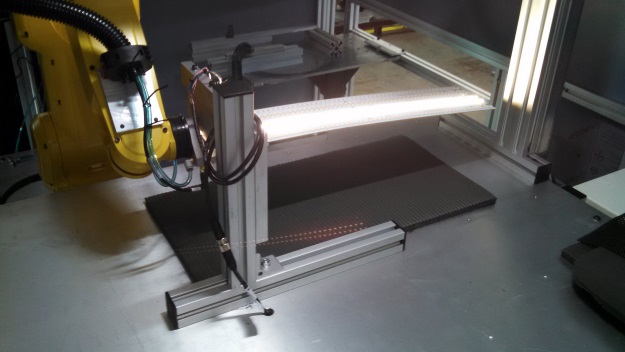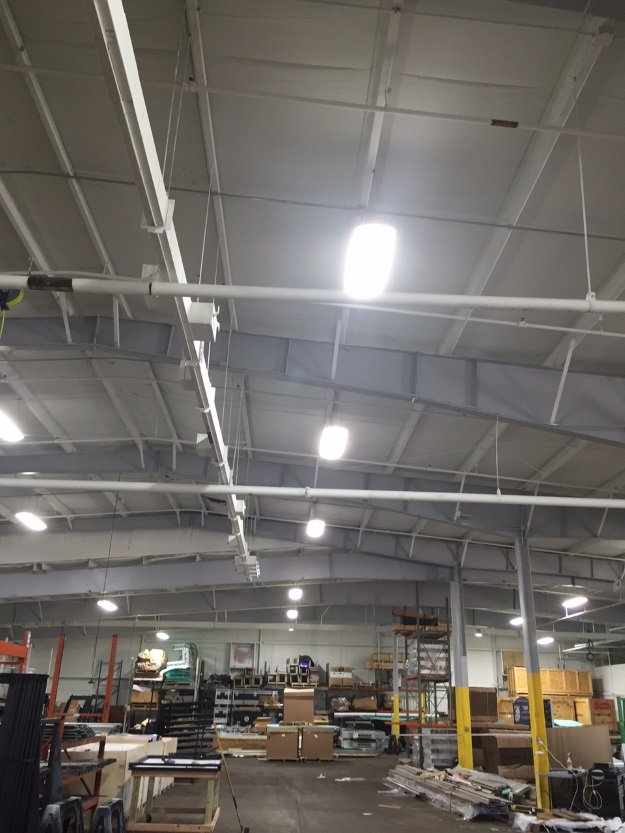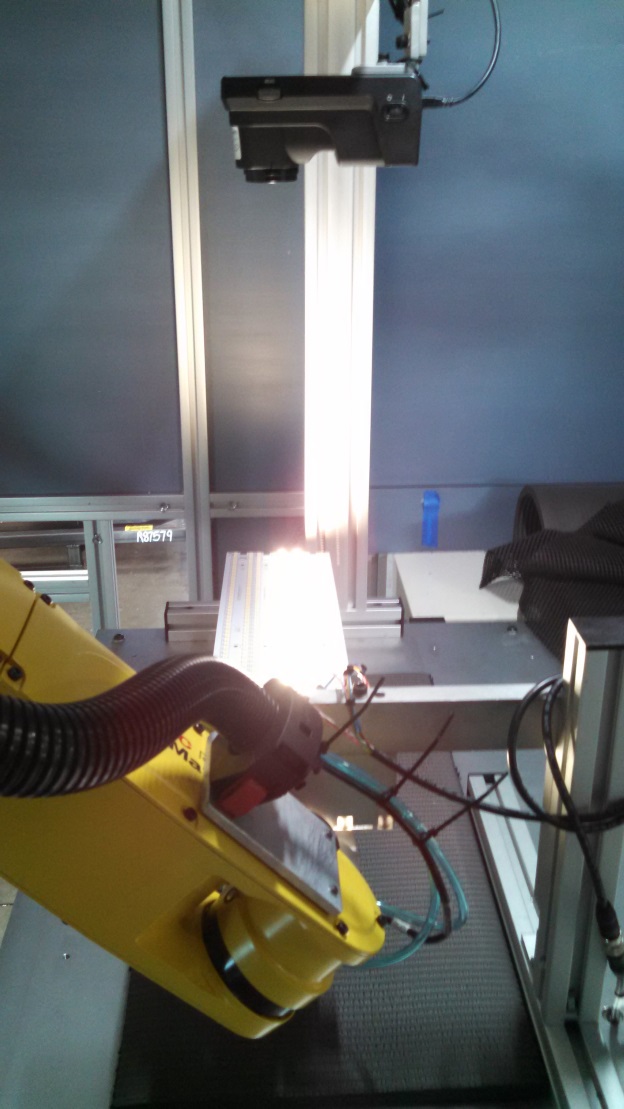Light engine that are up to 48 inches long and 15 inches wide are lighting up the bottom line of LED light fixture manufacturers who create linear products such as replacements for fluorescent lighting.
This advancement in light engine design (see Fig. 1 ) allows for the quicker, easier, and therefore cheaper assembly of linear light fixtures. Instead of two, four or even more light engines wired together to operate a linear or other larger LED fixtures, a lighting manufacturer can simply connect the LED lamps to a single circuit board thereby providing significant savings on labor, components and assembly time.

Fig. 1: Light engines measuring up to 48-in. connect easily to circuit boards and save on labor, components and time.
Acra Phenolic (Traverse City, MI), a supplier of new and retrofit interior LED lighting for the office space and manufacturing sectors (see Fig. 2 ), has seen significant savings by becoming an early adopter of this technology advancement.

Fig. 2: Interior lighting is now easier to connect and offers significant savings.
“On the average four-foot linear LED fixture we’re saving at least $3.50 on each unit,” says Tom Kearney, COO.
Kearney saw the need for interior lighting that was not only brighter, but also more efficient, in the typical manufacturing plant and office space. His solution was to replace T5HO lighting with more efficient LED lamps that have a life expectancy of 100,000 hours.
“I thought there was considerable room for improvement through upgrading to LED lighting, especially in business and industrial facilities where the high-pressure sodium or fluorescent lighting is often horrible,” he says. “The longer LED circuit board has added to that opportunity.”
The conventional light engine – the circuit board used to power more efficient and longer-lasting LED lamps – was in the past normally limited to approximately two feet in length. This meant that the assembly of linear LED fixtures, such as the four- or eight-foot models that are typically used to replace fluorescent lights, would require two or four boards attached in series or parallel end-to-end.
As Tom Kearney explains, with the introduction of the extended-length light engines, it takes only one board to power a typical four-foot linear LED fixture, and just two boards for an eight-footer.
“Since each board contains connectors at each end, by using a single, extended-length board for a typical four-foot fixture I’m saving six to eight connectors on each one. In addition, Also, I’m probably seeing a 20 to 25% savings on labor, plus there is a considerable savings on production time.”
The extended-length circuit boards, or light engines, are manufactured by MADE (Manufacturing And Design Electronics – formerly CI Lighting), Auburn Hills, MI.
Kearney selected this supplier not only because it was an innovator of the extended-length board, but also because the company performs 100 percent comprehensive testing, control and data reporting and recording,
“MADE does this automated inspection of each LED circuit board, ensuring that it lights properly, the color temperature, power output, brightness, and color rendering index are correct,” Kearney explains. “As a result, all of these things that I would have to do myself are already done when the products arrive at my facility. And that provides an important quality assurance as well as added savings.”
Enabling accurate replacement
In addition, in conjunction with the 100 percent inspection process, this new test system stores all pertinent LED light engine lighting characteristics in a database that can be made accessible to lighting manufacturers.
This database could prove valuable to manufacturers for use in handling warranty claims and as an extended service to enable them to match the color and brightness of an LED lamp (see Fig. 3 ) from a given production lot years later when the lamp eventually requires replacement.

Fig. 3: A new service enables MADE to match the color and brightness of an LED lamp from any production lot.
“Having the ability to match an LED light with one produced years ago can be an important capability,” notes Don Bernier, president of MADE. “The end user might know exactly what model the LED chip is, and that same chip might not be available, so with the data we have we can provide the closest replacement.”
Higher-performance lighting
Tom Kearney is an advocate of the long LED boards to replace standard T5HO lamps as the standard for his linear fixtures, as LEDs provide 25% better lumens per watt than the next closest type of light source as well as better lumen maintenance.
“The manufacturer of the LED chips estimates mathematically that they will maintain +90% of their output after 60,000 hours of operation, and +70% after 200,000 hours of operation” Kearney says.
Kearney explains that, on the other hand, standard metal halide or high-pressure sodium lamps provide only 50% of their initial light output in as little as 8- to 10 thousand hours or 36 months of service, and then require replacement. He also says that when the type of light he recommends has operated for a year, they maintain a higher level of lumens per watt than any other current light source available.
“Ironically, with traditional light sources you use the same amount of energy while getting less light output,” Kearney adds. “Fixtures using LEDs see a much smaller reduction of light output over the same period of time, and that provides additional energy savings as the years go by.”
Advertisement





